History of Burgundie: Difference between revisions
| Line 155: | Line 155: | ||
1095–1291 The Luciusian reign was notable for the initiation of the Crusades in Sarpedon, in 1095. The Crusades consolidated the identity of the Empire and rested much more power in the Emperor. The various princelings who campaigned together began to see beyond their narrow fiefdoms and understand the vastness and diversity of the Empire but also of their commonality with each other. They all spoke Latin as well as their local tongue, they all worshiped in the same Church with the same rites. Some scholars have posited that the 12th century was the cultural birth of the Imperial identity. | 1095–1291 The Luciusian reign was notable for the initiation of the Crusades in Sarpedon, in 1095. The Crusades consolidated the identity of the Empire and rested much more power in the Emperor. The various princelings who campaigned together began to see beyond their narrow fiefdoms and understand the vastness and diversity of the Empire but also of their commonality with each other. They all spoke Latin as well as their local tongue, they all worshiped in the same Church with the same rites. Some scholars have posited that the 12th century was the cultural birth of the Imperial identity. | ||
=====[[Great Confessional War]]===== | |||
==== Kingdom of Gassavelia ==== | ==== Kingdom of Gassavelia ==== | ||
Revision as of 07:58, 22 November 2022
An abridged history of Burgundie. [ALL PREVIOUS HISTORY IN DISCUSSION BOX UNTIL I IRON OUT THE KINKS (ie. EX-NATIONS)] Burgundie, in its modern form, was founded as a series of Latinic trading posts in northern Levantia in the first century CE. Throughout history, it remained linguistically and religiously connected to Latinic roots, especially as the nations of Heku and Urcea formalized, but its social and economic culture is heavily influenced by the Gaelic and Germanic cultures it displaced and subsumed. The Isle of Burgundie remained the majority of the nation from its formation circa 853 until its explosive colonization of Alshar and southern Crona starting in the 16th century. During its war of independence, Burgundie also came to encompass the Kingdom of Ultmar, the predominantly Gaelic lands between the Feradach Sound and the nations of Faneria and Fiannria.
Prehistoric Northern Levantia
3.3 million years ago to the advent of consistent Oral law, the earliest of which appeared c. 3200BC
Stone Age
Palaeolithic
Mesolithic
Neolithic
Chalcolithic
Bronze Age
Iron Age
Ancient Southern Levantia
3200BC-598AD
Kingdom of the Impari Impaxi
Error creating thumbnail: File missing
2800BC-164AD
Classical Antiquity
700BC-598AD
Great Levantia
Main article: Great Levantia
570BC-502AD
First Kingdom of the Burdeboch
Error creating thumbnail: File missing
527BC-285AD
Tyranny of Phaxolos
Error creating thumbnail: File missing
134AD-285AD
The Bergenddium
Error creating thumbnail: File missing
150AD-598AD
In 158, Julian Marcilius Corvus, now styled Bergendus, was crowned the first high-king of the Bergenddium. While often seen as the first formal state that would become Burgundie, the Bergenddium was a cultural empire rather than a legal kingdom. As such, the title of high king was more of an honor given to men of distinction than a royal appointment with set roles and responsibilities. The only task undertaken by all of the high kings, and often the reason that later high kings where chosen, was to negotiate peace deals with larger Kiro-Levantine powers.
In 164, Julian Marcilius Corvus Bergendus commissioned a map of the Bergenddium which included all of the Isle of Burgundie, most of the coasts of modern Marialanus and settlements along the coasts of modern Faneria, Kirav, Koskenkorva, Wintergen and some of the northern Fiannrian islands.
The Latinics in Ipar
100BC-150AD
Disparate emporium and Latinic ports along the coast of northern Levantia, the Coscivian and Kilikas Seas began to centralize around their shared culture. This is seen as the divergence of the Bergendii from the general pool of Odoneru Latinics. They formed a few small private armies and navies to further the goals of the Bergendii merchants in the area. They refused to see a single monolithic central government, but often came to each other's aid and involved themselves in each other's politics, especially around trade agreements.
In the 130s an enterprising merchant, Julian Marcilius Corvus, formed an army in the naissant port of Nordarmus and marched inland to push the Impaxi tribes from the interior and ultimately on to Levantia. Over the next 20 years, his army was able to crush any opposition and then to push the Impaxi to the coast near Biscainhos. In 153 a joint Impaxi/Levzeish force crushed Corvus' forces. He escaped with only 75 men and his train. In 155 Corvus returned with a large navy and besieged Biscainhos, catching its navy in the harbor. After a three year siege and numerous heavy bombardments, the first sea-to-land naval bombardments in northern Levantine history, Corvus' forces forced the Impaxi/Levzeish population to surrender. As part of the surrender agreement the Impaxi and Levzeish were banished from Ipar and resettled on the coast of northern Levantia.
Confederation of Medestophanese
Error creating thumbnail: File missing
285AD-598AD Istroyan city-states
Warlords Period
502AD-680AD Fall of Great Levantia- establishment of the Principality of Hištanšahr
Post-classical Burgundie
598AD-1575AD
Alvaria
Template:House of Alvarus
Error creating thumbnail: File missing
Main articles: List_of_Rulers_of_Burgundie § Alvarus_Dynasty, and Alvarus Dynasty
598-937 Alvarus Dynasty
Tonsure Wars
Main article: Ixnayan Crusades § Tonsure Wars
Second Kingdom of the Burdeboch
628-793
Republic of Isulae Isti
645-763
Part of the Asterian League.
Principality of Eagavix
Error creating thumbnail: File missing
677-936
Hištanšahr
Main article: Hištanšahr
680–1071
Bishopric of Rabascall
902-937
High Middle Ages
917-1575
Eastern Kingdom of the Levantines
Main article: Eastern Kingdom of the Levantines
917-965
926-1847
- part of the Holy Levantine Empire
Kingdom of Eagaria
936-1071
Archbishopric of Rabascall-Bergendia
Main article: List_of_Rulers_of_Burgundie § Archbishopric_of_Rabascall-Bergendia
937-1264
- part of the Holy Levantine Empire
Upon the collapse of the Alvarus dynasty in 935 the clergy interceded as enforcers of public order. They drafted a militia and established courts, effectively taking control of the island. In 936, the bishop of Rabascall, a small coastal bishopric on mainland Levantia seized the opportunity to support the Archbishop of Bergendia with a militia drafted from his fief. He was able to quell the revolt in Vilauristre and the southeastern coast within a month but had orders to cease all activity as he was undermining the Archbishop's authority by being so successful. Rather than heed the order he marched to Vilauristre and seized the archdioceses buildings. Holding the Archbishop hostage, he demanded that the Pope intercede and name him the Archbishop of Bergendia as well as Rabascall. The letter never arrived at the Holy See, but at that point the Bishop of Rabascall had the Archbishop killed for inciting public unrest and heresy.
Holy Levantine Empire
Luciusian Dynasty
1036-1134
Crusades in Sarpedon
Main article: Crusades
1095–1291 The Luciusian reign was notable for the initiation of the Crusades in Sarpedon, in 1095. The Crusades consolidated the identity of the Empire and rested much more power in the Emperor. The various princelings who campaigned together began to see beyond their narrow fiefdoms and understand the vastness and diversity of the Empire but also of their commonality with each other. They all spoke Latin as well as their local tongue, they all worshiped in the same Church with the same rites. Some scholars have posited that the 12th century was the cultural birth of the Imperial identity.
Great Confessional War
Kingdom of Gassavelia
Main article: Kingdom of Gassavelia
1071–1568 War of the Three Princes, in 1071. Seoirge was crowned as the first King of Gassavelia by the Pope, incorporating the realm into the Empire. Removing the need to watch the southern border of the Empire, successive emperors looked northward and set about an age of expansionism across Levantia.
Vilauristre Conference

1204-1575 Hanseatic League like group of cities in eastern Kingdom of Dericania 1427, Universitas Magistrorum in NordHalle 1429- Order of the Obsidian Sparrow, Crusades
County of Bergendia
House of Palacin-NordHalle
Template:House of Palacin-NordHalle
Main articles: List_of_Rulers_of_Burgundie § Palacin-NordHalle_Dynasty, and Palacin-NordHalle Dynasty
1264-1418 Palacin-NordHalle Dynasty
Bishopric of Mattiusvale
1264-1463
Duchy of Burgondia
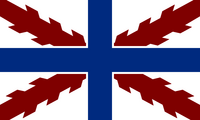
Order of the Obsidian Sparrow
Main article: Order of the Obsidian Sparrow
Error creating thumbnail: File missing
Founded in 1429, on the modern island province of Drusla, then known as Isulae Isti. They held the town of Hadua from 1429 until 1574. With the raising of the Joanusterrium to a Most Serene Duchy and election of Joanus de Martigueux to Grand Master of the Order, they retired from Hadua and moved their capital to Collinebourg.
Duchy of Marialanus
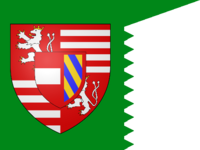
Great Confessional War
Plague of 1561
Plague of 1571
Truffle Races
Colonial ventures
Marialanii Ularien Trading Company (MUTC) established:
- Ayermer colony (1616-????)
- Kandoora colony (1600-1795)
- Far East Colony (1638-1817)
- Barbary Straits colony (1635-1836)
- Torlen colony (???? - 1875)
County Palatine of Estia

Great Confessional War
Main article: Great Confessional War
1555-1575
Early modern period
Renaissance of Eastern Dericania
1579-1737
More of an early enlightenment than a true "renaissance".
Just a few more witchfinder generals (Burg: General cacaire-brueisse) but at least they get trials...so democratization of justice? Introduction of coffee/tea leading to an end of a 1500 year hangover. Interaction with Muslim/Audonian scholarship. Wealth from colonisation creates a middle class. Colonization creates an outlet for none primary sons reducing crime, poverty, and mediaeval homelessness.
Age of Discovery
| Error creating thumbnail: File missing
Imperial entities of Punth | |
| Burgundie | 1598–present
|
|---|---|
| Urcea | 1568–present
Kandoora (1598-1795) |
|
| |
| |
1576-1825
Trade Company Empires
Main article: Burgoignesc Colonial Empire
As part of this new period of self-rule, the Dukes created a series of trading companies that sought to raise the clout of the duchy and enrich themselves. They pushed the bounds of the maritime technology at the time and traveled around the world looking for fertile trade and investment opportunities. The largest and most storied companies were the Burgundian West Punth Trading Company and the Burgundian Grand Crona Trading Company. Unlike the other trading companies, these two set out on a path of colonization that, at their heights, covered all of Alshar and large swaths of south-central Crona.
Duchy of Martilles
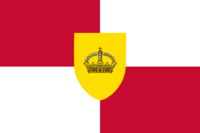
Truffle Races
Colonial ventures
Martillien North Levantine Trading Company (MNLC) established:
- Eloillette (1611-1795)
- Chaukhira colony (tbd)
- Veraise colony (1593 - 1812)
- Nauta Normand colony (tbd)
- Wintergen colony (1823-1869)
County Palatine of Pumbria

The county was brutally unified with Burgundie in the First Fratricide despite a strong anti-mediatization stance.
County of Le Ax-Canbon
1575-1850
Duchy of Bourgondi
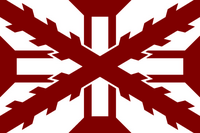
Truffle Races
Colonial ventures
Bourgondii Royal Trading Company (BRTC) established:
- Colony of Santasi (1646-1721)
- Pukhgundi colony (1635-1811)
- Istroya Oriental colony (1577-1842)
- Kandahari-Pukhtun colony (1615-1830s)
- Sudmoll colony (tbd)
- Islevenin colony (???? - 1899)
- Medimeria colony (1578-2014)
- Equitorial Ostiecia colony (tbd)
Late modern period
1812-Great War
Industrial Revolution
1826-1864 A rapid period of urbanization and industrialization followed the independence of Burgundie, which brought many new resources cheaply into the grasp of the common Burgundians. This economic choice and freedom was a spark that soon turned into a roaring inferno. The desire for these new goods led to the rebuilding of the Burgundian merchant fleet. Great Prince Pau II, patched relations with the Fanerian and they bankrolled many of the upgrades to the shipyards and markets. The Fanerian encouraged loans for companies that favored industrialized processes over craft production. This saw larger chantiers eclipsing smaller ateliers and forever changing the economy in Burgundie. Whereas before the Burgundian economy was a rats nest of related by independent workshops and guilds run by master craftsmen all coming together project by project, the Fanerian investment forced a movement to massive companies with "in-house" processes and a large unskilled mechanized workforce. With this massive, immediate need for cheap labor the Isle of Burgundie turned to "the provinces".
Many in the northern Levantine provinces of Marialanus, Argenbagne, and Burdeboch immigrated to the Isle of Burgundie in search of work. The population of Burgundie had doubled with the acquisition of new lands, but the majority of the population was, or soon moved to cities on the Isle of Burgundie itself. Almost immediately a social divide emerged. The people from the Isle of Burgundie saw themselves as superior to those native to "the provinces". Riots broke out against les æleigens (Eng. the aliens) in the 1840s which saw widespread support at first, but as business owners began to see the rate of absenteeism rise in the new working class, the government interceded on the owners behalf and stationed the Elite Gendarmes of the Royal Guard in immigrant neighborhoods to protect them. Since then the royal government has enjoyed a fairly positive relatioship with the working class. An uneasy symbiosis was established that was marked by a divide between the resource-poor but cash-rich urban Burgundians the resource-rich but cash-poor rural peoples of mainland Levantia.
It was a time of infectious optimism and patriotic pride. With a sense of stability returned, the trade routes started spreading further than they had ever spread before. Shipping technology allowed travel to all of the continents, and in 1826 the first global circumnavigation by a Burgundian was completed. Having focused primarily on local trade, the expansion of global trade took some adjustment. Larger ships with deeper drafts lead to innovations in harbor dredging but took a toll on the dwindling cedar forests across the island.
First Fratricide
Main article: First Fratricide 1849-1875
Burgundie-Faramount Union
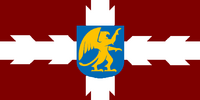
Independent Burgundie
Burgundian vs. Bergendii
Marius Dynasty
Main article: List_of_Rulers_of_Burgundie § Marius_Dynasty
Occupation of Wintergen and Kiravian Wars
Main article: Kiro-Burgoignesc Wars
In the early 1820s a devastating bark beetle blight that almost eliminated the remaining forests on the Ile of Burgundie. Desperate for more wood as the demand from timber-producing areas outstripped the locals ability to harvest it, some enterprising NordHallish shipwrights contracted the Burgoignesc North Levantine Trading Company (BNLTC) to occupy the timber camps of the Kiravian island of Wintergen. The timber operations there were well established and those in the newly conquered provinces of Levantine Burgundie were under formed at the mainland wood was considered subpar.
The government of Burgundie offered compensation but Kiravia did not accept terms and set up a government-in-exile. The status of Wintergen remains unsolved between the two nations.
As the reach and influence of the Merchant Marine of Burgundie increased they started to incur the wrath of existing trading powers. Kiravia in particular, with its vast colonial and trading network, saw the resurgence of a powerful maritime Burgundie as problematic. Following the 1823 occupation of the Kiravian island of Wintergen, a tension began to grow between Kiravian and Burgoignesc merchant sailors until war was tacitly declared on both sides resulting in a delayed start to the Kiro-Burgoignesc Wars. This time period coincided with the Punthite Quasi-Wars where Burgoignesc and Kiravian ships started to engage each other in earnest. This erupted with the practice of "clipper baiting" wherein Kiravian ships would capture Burgoignesc ships and their cargoes. After suffering humiliating defeats for years at the hands of the Kiravians the Navy of Burgundie and the shipwrights of Burgundie focused its efforts on building smaller and faster ships, primarily on schooner rigged yachts. These ships, while incredibly fast, housed only three guns and could not engage the Kiravian sloops-of-war in direct combat. Both Kiravia and Burgundie endorsed prize courts in their ports.
Trade Route Empire
An early clipper ship in Vilauristre Harbor in the 1830s
The era known colloquially as Le Talosocrasie (Eng. Trade Route Empire) spanned from 1837-1904 and is primarily a reference to the economic format of the time. It differentiated from the Trade Company Empires because trade became a centralized activity of the government. The government purchased majority portions of the various trade companies and directed their policy. This was a direct response to the escalation of the Kiro-Burgundian Wars, which at the time the Burgundians were losing badly. In addition to the international strife, the era was punctuated by internal violence as well. Constant uprisings across the newly acquired lands in Levantine Burgundie led many to abandon any hopes of investing and improving the area. To support the constant policing and military actions, taxes were raised, primarily against the poorer classes. It was assumed that since the majority of those caught rebelling were unskilled laborers or tenant farmers that the tax burden should fall on those classes. If it was observed that these cantankerous actions were organized and led by members of the Ultmarian lesser nobility and the middle class, it was ignored and no evidence of it exists in court documents.
Clipper Ships
The extreme clipper Donnerkeil in Gletchstiknsburg
The pseudo-war sparked a ship design frenzy in Burgundie. Faster and sleeker merchant ships were needed to outrun the Kiravian navy. In 1832, the architects of the Doppel Shipyard produced a clipper ship that quickly became the standard of most Burgundian merchant fleets. The ship was unique because it had much more topsail yardage and any previous ship and was comparatively small. This allowed the clipper to achieve incredible speeds. These ships were designed to outpace the Kiravian navy and make the Yytuskia Beef Run in less than 130 days. This was important because even salted the beef would start to rot after the 135-day mark. Yytuskian beef was prized among the elite because it represented the extent of the Trade Route Empire's reach.
The Yytuskia Beef Run consisted of travel down the Fanerian and Urcean coast, across northern Ixprop, criss-crossing the Kindreds Sea, then shooting out from Vahltunskh to Yytuskia. The return leg saw the clippers travel to Akai, along southern Crona then back to Burgundie.
Later, in the 1860s, Doppel Shipyard built extreme clippers to go down the eastern coast of Levantia, over the Levantine Ocean to Santheres and Pukhtunkhwa on the Spice Run. In addition to spices, some enterprising clipper captains started smuggling Pukhtunkhwan heroin in their holds. They would sell the heroin to black markets in Heku and Kiravia. These clipper crews became incredibly rich and would often flaunt their new found wealth upon their return. This drew the ire of the Catholic elite and soon the Revenue Guard was tasked with drug enforcement. Since no heroin touched Levantine soil, they needed a forward operating base.
These trade routes were plagued by piracy. Additional issues arose around 1867 when the first record of "clipper baiting" was recorded. Laden with spices (and sometimes heroin) rival Burgundian and Kiravian clipper ships would lure each other into a pirate-infested territory. The slower of the two would be captured. The pirates would ransom the goods at less than market value to the faster ship. This led to a cutthroat business between clipper captains and Pukhtunkhwan pirate lords. The rash of piracy from Kandara and Pukhtunkhwa and "clipper baiting" spurred the predominantly Catholic Revenue Guard to set up a permanent base on the island of AyerSee and Sodermark in the 1870s. The AyerSee base of operations remains one of the foremost pirate hunting training schools in Greater Ixnay.
While this run did at times include trips to Vespia there was often contentious competition with the Vespian Merchant Navy.
People's Spring in Burgundie
The People's Spring of 1848 rocked the nascent establishment to its core. The socialist, anti-monarchist rebellions seeking independent republics of Burgundie, Ultmar and Flordeterra. The wedding of Great Prince Pau II in January of 1848 was so opulent and extravagant that it starved and impoverished many of the poor across Burgundie. Grain stores were expropriated, taxes were raised even further, and many workers were pressed into service to throng the parade route. Unlike his martial and resourceful father Pau I, Pau II was raised to be gentil and refined by his mother Maria-Isabel de Martilles. He was spoiled and reactionary, often choosing to micromanage his problems, regardless of his ability to do so knowledgeably. He was set to become an absolute ruler and the pomp and circumstance that he demanded for his wedding demonstrated that fact.
In the months after the wedding, the starving peasants across Burdeboch and Marves took up arms and raided government storehouses in search of food. The militias from the Isle of Burgundie and Marialanus, as well as the Gendarmes d'elite della Gaurdie Real (Elite Gendarmes of the Royal Guard) for the first time, were mobilized and violently suppressed the peasants.
Second Fratricide
Main article: Second Fratricide
Emirati War
Main article: Emirati War
Between Burgundie, the United Pukhgundian Emirates, the Trucial States, and the Emirate of Kagazi. 1871-1897. 1880s Observation balloons, the first recorded use of a lighter than air vehicle to drop a device for a military purpose. Dropped a fused grenade.
New Nation
Burgoigniac vs. Bergendii
First Cod Fishing War
Second Cod Fishing War
Battle of Port de Vent
Kilikas Shipping War
War of St. Brendan's Strait
Main article: War of St. Brendan's Strait
First Great War
Main article: First Great War
Le Intermezzo Splendide
The Interwar Period, (Burg: le Intermezzo Splendide), spanning 1902-1934
Second Great War
Main article: Second Great War
Hyper Urbanization
1899-1963
Contemporary period
Great War-present
Occidental Cold War
Main article: Occidental Cold War
The end of hostilities in the Great War lead almost immediately to a reignition of the rivalry between Levantia and Caphiria. The formation of the League of Nations could not or would not resolve this enmity but did at least staunch the need for direct combat. From the perspective of Caphiria, the creation of Valcenia and its addition to the Levantia and Odoneru Treaty Association was considered the "crown jewel" of Levantine Creep, and consequently policymakers in Venceia believed it must redouble its efforts - rather than reduce them - to undermine the influence of Levantia everywhere.
For the Burgoignacs, the legacy of the explosion of the Caphirian atomic weapon loomed large and they shied away from any strong position taken by Urcea and other combatants in an effort not to antagonize the Caphirians again. In general, Burgundie participated in the various posturing and other geopolitical efforts between the Caphiria and Urcea, in support of Urcea beginning the decades long Occidental Cold War. However, Burgundie overwhelmingly threw its diplomatic efforts in the global improvement initiatives, primarily through the League of Nations, and continental improvement through the Levantine Union.
During this time Burgundie's foreign policy shifted from military and political expansion to economic domination. Using its global improvement initiatives it worked tirelessly to raise the global standard of living, but with the goal of taking advantage of these newly buoyed markets. This was stymied in the mid 1960s through the early 1980s by Operation Kipling, but the resulting logistical lessons learned from fighting a 18 year war on the other side of the world created a strong and resilient supply chain machine that lead to a huge booming economic rise starting in the mid 1970s.
Palacin Dynasty
Main article: List_of_Rulers_of_Burgundie § Palacin_Dynasty
The Great Tumult
Urban Decay, Kirosocialism, Communism and the 1960s
The Nine-Year Terror
Main article: The Nine-Year Terror
The The Nine-Year Terror was a civil war in Faneria from January 10, 1953 to February 21, 1962 and resulted in a massive build-up of the Army of Burgundie on the border with Faneria. It is ironically observed that the soldier's revolt in Faneria likely gave Burgundian soldiers enough work to prevent a similar revolt in Burgundie. Its more radical tenants also lead to the first Red Scare in Burgundie, which would reach a fever pitch during Operation Kipling. This build-up allowed the Burgundian arms industry to continue constructing at almost wartime levels to ensure that the Burgundian military was able to meet the new threats closer to home. This allowed for the older Great War equipment to be sold off to Audonian and Alsharite nations. The weary of constant wartime rationing, active duty, production quotas Levantine Burgundians also started to adopt a more hysterical view of world. With the Caphirian atomic bomb, the rise of Kiroocialism, and now the The Nine-Year Terror, many took to prepping. This was best exemplified in the bunker-mania of the 1950s and 60s in Levantine and Cronan Burgundie. Fallout shelters became popular both in public places and in the yards and gardens of those who could afford them. To govern this effort the Bureau of Emergency Defense was created and tasked with the generation of public preparedness material, conducting shelter inspection, and altering civilian populations of invasion or imminent atomic, later nuclear, strike.
Operation Kipling
Main article: Operation Kipling
The Mod-Trad War
A cultural revolt of the modernist youth against the traditionalist establishment. The war ended with a modernist victory as the unpopular Great Prince August I abdicated in favor of his son August II, in 1975, and lead to the eventual collapse of the Marius Dynasty in 1989.
Tenants of the mod lifestyle were often defined in opposition to the traditionalist standards of the day.
| Traditionalist view | Traditionalist depiction | Modernist view | Modernist depiction | Contemporary impact notes | |
|---|---|---|---|---|---|
| Fashion | Formal wear
Bespoke, subdued color palette, forms of dress for each part of the day, signified the socio-economic class of the wearer |
Rugby-fashion
Mass-produced, garish color and pattern pallete, all day wear, not class significant |
Both styles persist, but the formal wear is relegated to high society functions, senior government officials, the royal family, and their attendants. | ||
| Drinking | Tabernae culture | Cafe culture | Bars have laregly supplanted pubs in urban areas, coffeeshops boomed in the 1960s and 1970s, and have seen a revival since the 2010s |
Second Burgundian Renaissance
1976-present In 1976 the new Prince, Jörg II, embarked on a mission to reengage the world. Throughout the next decade he embarked on a goodwill tour conducted through Levantia and beyond. The tour was lauded for mending and strengthening relationships with Fiannria, Faneria, Urcea and Kiravia, and reasserting active Burgundian participation in the Holy Levantine Imperial Diet and Collegial Electorate.
A resurgence in profile lead to an increase in trade and financial gain. Burgundian shipwrights again began to build world class ships, and the merchant class thrived on the new business. No longer were they just operating ships for trade to and from Burgundie, but Burgundian companies like O’Shea Container Shipping, Lansing Lines and Doppel Gangway became some of the premier merchant fleets in Greater Ixnay. In addition, new industries, particularly insurance and global maritime incident response/command, brought enormous gains to the labor market.
Economic reform 1996–2004
Prince Kliebold III, set about a policy of deregulation, to attract additional businesses to Burgundie. Grasping the potential of the internet, Abs completely deregulated financial transactions conducted electronically. While this brought countless billions into Burgundian banks, it had the adverse effect of making Burgundie a haven for illegal or financial questionable accounts.
Great Recession 2004–2008
Following the leaking of a report that the Revenue Guard was looking to seize thousands of accounts that they deemed illicit, many account holders pulled their money out of the Burgundian banking system. 2 in 5 banks failed. A national referendum on a bailout proposal was held and on Feb 9, 2005 the people chose not bailout the banks. Foreclosure signs became commonplace, particularly in the “Raugrafschaften” (undeveloped counties) where fewer people had contingency plans. The Golden Council of Ten enacted a 2 year no cost financial planning campaign for those who had lost more than 25% of their net worth. By 2006 the economy had begun to regrow and by 2008 the recession was declared over. Viceroy Abs’ deregulation policy was held responsible for the recession and his approval ratings have yet to recover.
Urban Renewal
Burgundie generally pursues a policy of neutrality, with the exception of the obstruction of trade. A strong Navy of Burgundie, Airforce of Burgundie and Revenue Guard is maintained by the government, but can be supplemented, by Viceregal decree, by elements of the two private navies operated by the Maritime Response Group™ or Roth Insurance LLC.
Since Burgundie is no longer a commodities exporter, almost all of the trade carried out by Burgundian merchant fleets is between other nations. Because of this Burgundie maintains a considerable trade deficit, but uses its diverse maritime revenue to keep the economy booming. Since 1996, there has been a huge investment in computing, light manufacturing and higher education which has helped to keep the unemployment rates at a steady 3%.
Salaries are high, except in inland regions of the Raugrafschaften which is a manifestation of the cultural disparity between those born on the Burgundie and those born in the “Raugrafschaften” that continues to exist. However, the advent of social media is bringing the citizens of Burgundie closer all the time.
Dericania Crisis
Main article: Dericania Crisis